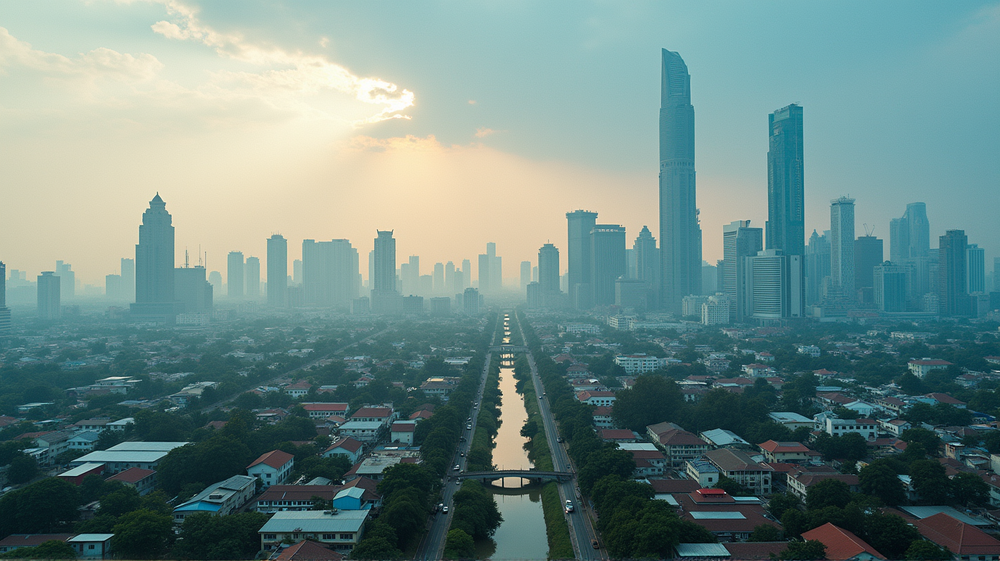Merging Provinces: A New Dawn for Vietnam's Economic Growth
The merger of Vietnam’s provinces and cities has become a transformative force, propelling regions into promising economic landscapes. By synchronizing strengths in terrain, infrastructure, and industry, Vietnam is crafting a future teeming with potential and prosperity. In this reshaped economic tapestry, new stories of innovation and ambition are being woven.
Uniting Regions, Strengthening Economies
On July 1, 2025, Vietnam embarked on a bold journey by merging 63 provinces and cities into 34 provincial entities. This strategic integration aims not only to reconfigure administrative boundaries but also to ignite unprecedented economic development.
According to experts, the reshaping has unveiled diverse development spaces, prompting localities to collectively harness complementary strengths. The merger isn’t merely a territorial adjustment; it sets forth an urgent call for economic restructuring, urging regions to intertwine their resources and capabilities.
Quảng Ngãi and Kon Tum: A Tourism Powerhouse
The new Quảng Ngãi Province stands as a testament to the power of strategic mergers. By uniting Quảng Ngãi with Kon Tum, this province now spans nearly 15,000 square kilometres, encompassing the lively Sa Huỳnh coastline and the expansive Central Highlands forests. With a vision to make tourism an economic pillar, Quảng Ngãi is leveraging the Lý Sơn Măng Đen corridor, linking its rich coastline with serene highlands.
Driving Growth in Đồng Nai
The new Đồng Nai Province, expanding over 12,700 square kilometres post-merger, has positioned itself as a major economic hub. With a robust public investment strategy and a commitment to administrative reform, Đồng Nai targets a 10 per cent GRDP growth in 2025. This ambition is supported by already thriving industrial parks that attracted over US$1.4 billion in foreign direct investment within the year.
“It’s a collaborative effort,” notes Võ Tấn Đức, chairman of the Đồng Nai People’s Committee, emphasizing the collective push for economic excellence.
HCM City’s Role as Economic Powerhouse
The enlarged Hồ Chí Minh City, now unified with Bình Dương and Bà Rịa Vũng Tàu, is evolving into a comprehensive economic powerhouse. With its sights set on becoming Vietnam’s global city within Southeast Asia, it champions a multi-sector growth strategy, focusing on high-tech industries, international financial services, and a thriving marine economy bolstered by modern logistics.
Navigating Challenges and Opportunities
While some provinces like Khánh Hòa, despite advantageous infrastructures like the Vân Phong Port and Cam Ranh Airport, still face integration challenges, others like Bắc Ninh and Tây Ninh are flourishing by aligning with modern industries and services.
The road to harnessing these new development potentials is laden with challenges but holds the promise of extensive rewards. At the strategic level, experts stress the importance of meticulous planning, human capital enhancement, and an unwavering drive toward digital transformation as pivotal components in turning potential into tangible economic strength.
A Vision for the Future
Vietnam’s journey of merging provinces and cities marks the beginning of an exhilarating era in regional economic development. This transformation requires a holistic approach, focusing on regional coordination, and strategic investment while staying nimble to adapt to the evolving global economic landscape. As rightly envisioned, these efforts will establish Vietnam as a competitive player on the global economic stage, paving the way for a sustainable and prosperous future. According to vietnamnews.vn, the potential is immense, and the possibilities are boundless.




